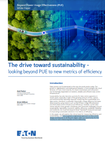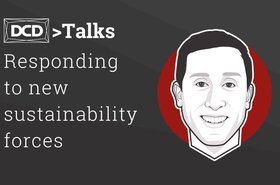Jessica Hinojosa has joined Microsoft's carbon removal team as a program manager.
Hinojosa spent the last seven years at fossil fuel giant Shell, working as the nature-based solutions lead.
"I started at Shell as a geochemist in the core oil and gas business, where I learned volumes about our energy system and how our entire global infrastructure has been built to run on fossil fuels," Hinojosa said.
"Understanding that reality made me feel a sense of urgency to work on the energy transition and climate change mitigation, so I moved internally to Shell’s Nature-Based Solutions community. I spent an amazing five years working on carbon removal projects from mangrove restoration to agricultural practice change – all underpinned by cutting-edge research to make these processes faster, more scientifically demonstrable, and cheaper.
She added: "Though I loved the people and the work at Shell, recent shifts in company priorities took the company on a path that was diverging from my own."
Earlier this year, Shell announced that it would weaken its own efforts to reduce emissions per unit of energy, scrap some of its climate goals, scale back renewable efforts, and double down on fossil fuels.
The company laid off workers in its greener divisions, including hydrogen, and expanded oil and gas projects.
Even prior to the change, the company was one of the world's largest carbon emitters, with its carbon capture and reduction efforts criticized as a way to distract from its impact on the planet. This May, a Shell-operated plant in Canada reported millions of carbon credits tied to CO2 removal that never actually happened.
In her post, Hinojosa added: "Now, I’m embarking on my next adventure – joining the Carbon Removal team at Microsoft. Microsoft is one of the most catalytic players in the voluntary carbon market, incentivizing high-quality carbon removals across many pathways. They often take bets on early-stage technologies and suppliers that need a demand signal to gain greater market traction. I couldn’t be more jazzed to join this team and contribute to this impact."
Microsoft has become the world's largest corporate funder of carbon removal projects, as it looks to offset the impact of its data center and enterprise businesses.
This week, the company signed carbon removal deals with Undo and Eion, both of which use enhanced rock weathering to capture carbon. It has bought millions in carbon credits for forests, and paid for millions of tons of carbon to be removed by technologies at various levels of maturity.
Removing carbon from the atmosphere will be required if the planet is to come close to meeting emissions targets, but only if efforts to reduce new emissions are more aggressive. Critics point to the lack of accountability, tracking, and dubious science of some approaches.
Nature-based solutions can also be fragile - with a Microsoft-backed forest burning down in 2021 due to climate change-induced wildfires, erasing any carbon sequestration.
In a brief stint between Shell and Microsoft, Hinojosa worked for carbon registry and tracking company Isometric.
"If it’s not obvious, there’s a red thread here: Carbon removals on the voluntary carbon market. I’m doubling down on my belief that the VCM is critical to reaching any of our climate targets, and we need more ambitious movement in this space," she said. "Though it might be a little trite, I think the quote that sums it all up is the old proverb about tree planting: 'The best time to plant a tree was 20 years ago. The second best time is now.'"




